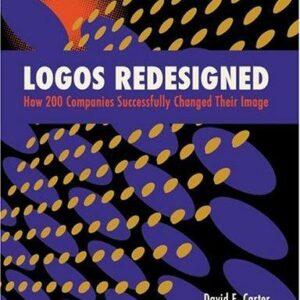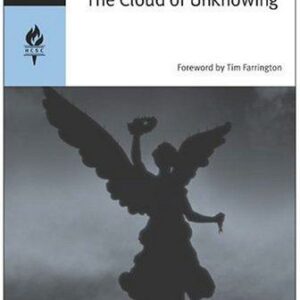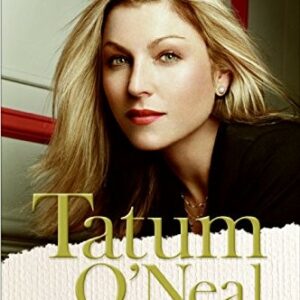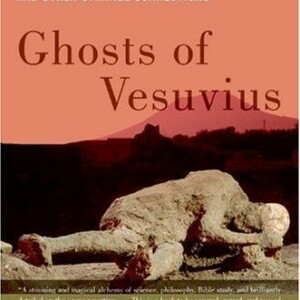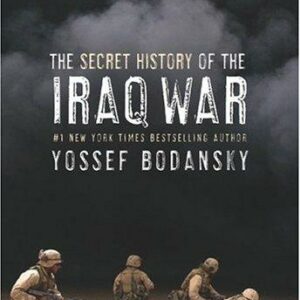American Blonde
$16.00
| Title | Range | Discount |
|---|---|---|
| Trade Discount | 5 + | 25% |
- Description
- Additional information
Description
From the New York Times bestselling author of All the Bright Places—soon to be a Netflix film starring Elle Fanning—comes the story of a fearless and spirited World War II pilot who boldly sets her sights on movie stardom.
In 1945, Velva Jean Hart is a bona fide war heroine. After a newsreel films her triumphant return to America, Metro-Goldwyn-Mayer promises to make her a star. They give her a new life story and a brand new name. As “Kit Rogers,” she navigates the movie sets, recording sessions, parties, staged romances, and occasional backstabbing that accompany her newfound fame. She also navigates real-life romance, finding herself caught between a charismatic young writer and a sexy and enigmatic musician from her past.
But when one of her best friends dies mysteriously and the most powerful studio in the world launches a cover-up, Velva Jean goes in search of the truth—risking her own life, as well as her heart, in the process.
Set during Hollywood’s Golden Age and peopled with a cast of unforgettable characters, American Blonde will mesmerize readers of The Chaperone as well as fans of the Velva Jean series.Praise for Jennifer Niven and Her Novels
“A stunning talent. Like Elmore Leonard, [Niven]’s such a sneaky good writer that you might not notice what she’s up to. On one level, American Blonde is a crackling thriller that will keep you up all night until the pieces of the plot come together. At the same time, it’s an elegantly written, impressively researched novel that makes idealism, heroism, and a romantic era come to life. Either way, it’s a total knockout.”—Jonathan Eig, New York Times bestselling author of Get Capone, Luckiest Man, and Opening Day
“Fans will relish this latest installment in the adventures of Velva Jean.”— Booklist
“Utterly enthralling from the first page to the last, thanks to the magic of Jennifer Niven’s lovely writing, and the riveting drama of her character’s quest for her dreams and for herself.”— Rosemary Harris, Tony-and-Emmy Award-winning actress
“Captures perfectly the artificiality of Hollywood and the iron grip of the studio system in the 1940s.”—Historical Novel Society
“Every moment sparkles with wit, excitement, and historical accuracy.”—North Valley Magazine
“Wonderfully constructed, with an amazingly shocking end showing the story to be a great thriller as well as a work of romance and historical fiction. Highly recommended.”—Crystal Book Review
“A spunky, modern heroine with a knock-out voice.”—Reading Lark
“Mixes golden age drama with a touch of noir mystery.”—ARe Café
“It’s an exciting book that paints a vivid picture of the movie industry of the time…Velva Jean is a brave, smart and loyal woman.”—Bookworm is my Totem
“If you’re a fan of Hollywood’s Golden Age there’s plenty for you here [with a] murder mystery . . . good enough to hold your interest even if you’re not fascinated by the machinations of the studio system.”—Verity Reads BooksJennifer Niven is the New York Times bestselling author of All the Bright Places and Holding Up the Universe, as well as the popular Velva Jean series. She is also the author of several non-fiction books, including Ada Blackjack, The Aqua-Net Diaries, and The Ice Master, which was named a top non-fiction book by Entertainment Weekly. Her New York Times bestseller All the Bright Places is soon to be a major motion picture starring Elle Fanning. Although she grew up in Indiana, she now lives with her fiancé and literary cats in Los Angeles, which remains her favorite place to wander.
INTRODUCTION
A fearless and spirited pilot conquers Hollywood. Now can she survive movie stardom?
In 1945, Velva Jean Hart is a bona fide war heroine. After a newsreel films her triumphant return to America, Metro-Goldwyn-Mayer promises to make her a star. They give her a new life story and a brand new name. As “Kit Rogers,” she navigates the movie sets, recording sessions, parties, staged romances, and occasional backstabbing that accompany her newfound fame. She also navigates real-life romance, finding herself caught between a charismatic young writer and a sexy and enigmatic musician from her past. But when one of her best friends dies mysteriously and the most powerful studio in the world launches a cover-up, Velva Jean goes in search of the truth— risking her own life, as well as her heart, in the process.
Set during Hollywood’s Golden Age and peopled with a cast of unforgettable characters, American Blonde will mesmerize readers of The Chaperone as well as fans of the Velva Jean series.
ABOUT JENNIFER NIVEN
Jennifer Niven is the award-winning author of three previous novels and three works of nonfiction. She lives in Los Angeles.
A CONVERSATION WITH JENNIFER NIVEN
1. How much research did you do in order to write this book? Were you surprised to learn how powerful movie studios had been in the 1940s?
I researched a great deal (see my answer to the third question, below), although I was already familiar with the time period and setting because of my love for all things old Hollywood. Years ago, I dated a boy who owned a tour company that visited historic Hollywood sites, and I learned a lot from accompanying him around Los Angeles. Since then, I’ve amassed quite a collection of film books, from movie star biographies, to books on costume design, the Academy Awards, the studio system and the moguls who created it, the early days, the golden days, and everything in between. Because of all my reading, I knew a lot about the power the movie studios wielded, but even with some warning, I was still stunned by how much they got away with and by the heavy-handed, manipulative manner in which they controlled their stars, the media, and the town itself.
For this book, I relied heavily on my own library, but also reached out to other amazing resources—Dr. Michael Wilks, senior forensic physician, Thames Valley Police; Dr. James Klaunig, former state toxicologist of Indiana; the Los Angeles Police Museum; the Margaret Herrick Library; the Hollywood History Museum; the Hollywood Heritage Museum; the UCLA Film & Television Archive; the Louis B. Mayer Library at my film school alma mater, AFI; the USC Cinematic Arts Library; the Hertzberg-Davis Forensic Science Center; and the Los Angeles Public Library. I love research and could have gone on researching for years! Except that at some point, you have to make yourself stop researching so that you can write.
2. As readers, we’ve seen Velva Jean learn to drive, become a WASP, spy for the French resistance, and now, star in classic Hollywood films. Do you favor any one particular incarnation of Velva Jean? Is it difficult to weave her singular personality into these different plots? How do you imagine these fabulous adventures for her?
I tend to favor the incarnation of the moment—whichever adventure I’m writing for Velva Jean is always my favorite. I loved learning to fly (so to speak) alongside her, just as I loved following her through the woods and cities of France as she found herself playing the role of spy. When I first had the idea for the series, I knew I wanted Velva Jean to have many, many adventures before she ever settled into her ultimate adventure—singing at the Grand Ole Opry. I knew that she would become a pilot, a spy, and a movie star because those occupations are in keeping with her character. They are also things I would have wanted to do if I’d lived during the 1940s!
What was missing back then, when I originally thought of the series, was knowing how she would get here and there and how this or that might happen. Writing a series is similar to solving a puzzle. I needed to figure out where the puzzle pieces went and how they should fit together—and, of course, how that singular personality of hers would weave into the various plots. This may sound funny, but I knew Velva Jean so well by the time I had written the first book, that she helped guide me the rest of the way through the others. If I ever struggled too much with a plot point, if it ever felt as if I were forcing her to do something she might not organically do, she would let me know because immediately her voice would go flat and artificial. I tried to stay true to her, no matter what scenario I placed her in.
This last incarnation of Velva Jean, which finds her in Hollywood, was probably the one I most looked forward to writing because of my love for Hollywood in that era. But I will always have a soft spot for the very first Velva Jean, just a big-dreaming, far-reaching mountain girl who taught herself to drive.
3. What are some of the particular challenges of writing a book set in the past? Are there any particular historical settings you have in mind for a new book? What are you working on now?
There’s a common misconception that writing fiction means making everything up, but when I am writing a book set in a specific time period and place, I feel a responsibility to research that time and place so that the background and setting of the story are as historically accurate and as true to life as possible. So there is much research to be done, which—thankfully—I love. It’s a bit like being a detective!
After I finished the writing of American Blonde, I had the urge to write something contemporary. Every one of my books thus far has been set in the past, whether in the Arctic of 1913 or Indiana of 1986 or Hollywood of 1945. My first YA novel, All the Bright Places, debuts January 15, 2015, from Knopf, and takes place today. I’m currently at work on my second YA novel, which is also modern. As much as I love history and research, I really am enjoying the contemporary setting.
DISCUSSION QUESTIONS
- In the opening pages of the novel, Johnny Clay tells Velva Jean, “If now is only two days, then two days is your life.” What does he mean by that? How is this idea presented throughout the rest of the novel?
- Why do you think Velva Jean chooses to leave Alluvial only days after returning? What does she hope for from her new life in Hollywood?
- Discuss MGM’s remaking of Velva Jean. She initially balks at their changes—her hair, her teeth, her name—but ultimately decides to proceed and sign her contract. Why does she acquiesce?
- The novel is divided into three parts: “Miss Red, White, and Blue,” “Kit Rogers,” and “Velva Jean Hart.” What do you think is the significance of these titles?
- Consider Sam Weldon’s relationship with Velva Jean. Are his feelings for “Pipes” genuine? Velva Jean seems to like Sam, too, but she turns him down. Why?
- How would you describe Mudge and Velva Jean’s friendship? Did Velva Jean really know Mudge as well as she had hoped? Did anyone? Why was Mudge so private about her early life?
- Were you surprised by the tenacity and ruthlessness of MGM’s “fixers?” Why was it so important for the studio to cover up what really happened to Mudge? What do you think Velva Jean is expecting to discover when she takes up the case on her own?
- Velva Jean wonders “what strangers would be able to tell of my life” if all that was left of her were the tokens she keeps in a hatbox at the back of her closet. Consider your own sentimental trinkets—what would a stranger make of your life if they were all you left behind?
- How is Nigel Gray portrayed in the novel? Much of the intrigue surrounding Mudge’s death focuses on him, but we don’t hear his perspective until close to the end of the book. Can you understand his difficulty leaving Pia? Do you think he really did love Mudge?
- Thinking back, were there any hints about Babe’s identity earlier on in the novel? Can you understand why Edna was so intent on undoing Mudge? What role do you imagine Yilla King played in Edna’s scheme?
- Butch Dawkins weaves in and out of the novel’s plot, but it’s clear that he’s important to Velva Jean. Shortly before the close of the story, he tells her “I’m not going down this road unless you know you want to go down it. But you got to be sure.” Is she ready when Butch catches up to her on the side of an Arizona highway?
- What do you think is next for Velva Jean? She tells MGM’s newest star to “hold on” to herself. Did Velva Jean manage to do the same? Did her time in the film industry change her?
***This excerpt is from an advance uncorrected proof***
Copyright © 2014 by Jennifer Niven
One
Six days after setting sail from Scotland, my brother Johnny Clay and I stood pressed against the railing of the Gray Ghost. It was June 21, 1945. We were only two of fifteen thousand passengers. Soldiers filled the upper decks, so crushed together that I was afraid I might have to jump overboard to breathe. The fog settled thick around our shoulders as we waited for the first sight of land.
Ever since I was a little girl, growing up in my brother’s shadow, it was important that I see things first. But this time I’d decided to let him win. He needed to win because the war had changed him. Every day I looked at his face, searching for some trace of the boy I knew—my brother, my best friend, champion gold panner, rider of the rails, paratrooper—and sometimes he was there and sometimes he wasn’t. Today he was somewhere in between, here one moment and then gone again, like the sun on a cloudy day.
Thanks to a German bullet, Johnny Clay would always limp, but he didn’t mind this because all the best cowboys limped. The thing that troubled him more was the middle finger of his left hand and the fact that—also thanks to a German bullet—it was missing from the knuckle up. My brother was vain, and limping was one thing, but missing a finger was another. He was a gold panner and a guitar player. These were the things he could do best, once upon a time when he was whole, even though he’d done other things—roped cattle, flown and jumped out of planes. Now, if you asked him what he was going to do with himself, he’d tell you he guessed he might do anything he set his mind to. But he’d say it in a far-off way, as if he didn’t really mean it or care much at all.
The fog was so heavy that I could barely see the water, but as the ship went churning through, the spray hit my face. Before the war, the Gray Ghost had been the Queen Mary, the grandest ship on the ocean, but since 1942 she’d been used to transport troops across the world. Soldiers crowded to my left, to the back of me, to the right of Johnny Clay. I stood, my arm against my brother’s, staring out into nothing and thinking over everything I’d seen and done since the last time I’d been home to North Carolina, early in 1943. If you asked me what I planned to do now that I was going home again, I would tell you that for the first time in my life I didn’t know.
“What do you think New York City looks like, Johnny Clay?” I wondered if it was grander than Paris, where I’d worked as a spy, where my name had been Clementine Roux, where I’d cut and dyed my hair and pretended to be French, and where I had been captured by the Germans. I stared out at the fog and saw all the places I’d been: Scotland, England, Germany, and the villages and cities of France. I thought of the pieces of me I’d left behind, a piece here, a piece there, scattered like bread crumbs. How much of me was left?
My brother leaned over the rail, so far that I felt myself reaching for him, ready to pull him back. He said, “See for yourself.”
All at once, the haze lifted, and in the distance I could see the black outline of land. Something appeared through the clouds—at first a dusky mass, like a haint, but then a form. A crown, a torch held high. The Statue of Liberty. The torch had been dark since the war began but now it burned bright through the mist.
The soldiers started to cheer. Two dirigibles flew low in the sky. A helicopter passed over the ship, then another. From somewhere, a song was playing, as if the city was singing. Smaller boats steamed past, blowing three long whistles. The Gray Ghost responded with a rumbling, knee-shaking blast—like thunder. Flags flew from the tops of buildings and from the windows, which were open and filled with people leaning out. A brass band played on the pier: “God Bless America.”
I laid a hand on my brother’s arm, lightly, hoping he wouldn’t move it away. I said, “Oh, Johnny Clay. It’s beautiful.”
….
We pushed down the gangplank, carried by the crowd. Fifteen thousand soldiers fighting to be first on shore. I held tight to Johnny Clay’s hand, my feet barely touching the wood of the dock. With my other hand, I held tight to my hatbox, my Mexican guitar, my mandolin, until Johnny Clay took them from me. I didn’t need to walk because the men around me were pushing me forward. Thousands of people lined the pier and the harbor, waving, crying, shouting out names. Banners held high, flying in the breeze that skimmed off the water: “Welcome home, boys! Well done!” Handkerchiefs to mouths. Sobbing. Laughing. The first of the soldiers off, straining to find loved ones in the ocean of faces and waving hands. Men in uniform kneeling down to kiss American ground. Newsreel crews gathered, interviewing the returning heroes. Confetti falling like rain. I wanted to cover my ears from the noise, but I didn’t dare let go of my brother’s hand. It was his bad hand. I tried not to feel the knuckle, the smooth knot of it where the skin had grown over.
Just like that, we were on land. Back to America. Home. From somewhere, I heard my name and turned. I could see a man running, holding on to his hat. “Velva Jean Hart?”
“Yes, sir?”
“You’re the little girl pilot, the WAVE . . .”
“WASP.” I wasn’t a WASP anymore—Women Airforce Service Pilots, responsible for ferrying planes and bombers to military bases. The WASP had been disbanded in December. I wasn’t anything anymore, just a girl wanting to get back to her family and her mountains.
“Right, sure, WASP. You were in the British papers.”
Was I? I didn’t remember. I’d been too busy worrying over Johnny Clay, sitting at his bedside in the base hospital, praying for him to wake up, to get better, for months, and then waiting to go home, to be told he was strong enough, to find a ship with enough room to take us.
“Martin Seever, New York Post. Mind if I ask a few questions?”
“Okay.”
“How old are you, honey?”
“Twenty-two.”
“Where’re you from?”
“North Carolina.”
“Charlotte?”
“Alluvial. It’s in the mountains.”
“You the brother?” The man with the hat looked at Johnny Clay.
“Yessir.” Johnny Clay narrowed his eyes.
The brass band played “Battle Hymn of the Republic” as men kissed their wives, parents, children.
“How did it feel to be rescued by your sister? Is it true she picked you up herself and carried you into the plane?”
I thought Johnny Clay was going to punch the man. I said, “There was another man, an agent.” I didn’t want to say too much. A Frenchman. I don’t know his real name but I still have the gold ring he gave me.
“Now before this, you let yourself be captured by the Germans and placed in a French prison, is that true?” The reporter was looking at
me again.
“It was supposed to happen that way, but I was taken early.”
Martin Seever, New York Post, was writing down everything I said. He wanted to know how I got out of prison, was I tortured, what did the Nazis do to me, how did I find the agent, how did I free myself from the train that was sending me and all the others to Ravensbrück concentration camp. I told him Johnny Clay helped free me, he and the other agents. We fought off the Germans together as we escaped through the Palatinate Forest to France.
“Is that where you found the plane?” This was from another man, with a notebook and a cameraman.
“Just outside the forest on a German airfield, yes.”
A third reporter appeared: “Had you ever flown a German plane before?”
“No.”
“You were shot at by Germans and Americans on your way to England?”
“Yes.”
We were surrounded. They asked us to pose for pictures, the Statue of Liberty in the background, holding up two fingers in the V for Victory sign. One of the men had a moving picture camera. He said he was Ed Dale with News of the Day.
Johnny Clay said, “The newsreels?”
“That’s the one.”
Ed Dale pointed the camera at us. “Look right into the lens. Smile and wave. Put your arm around her, son, lean on her just a little. Wave that hand, the one missing the finger. Now, honey, you look up at your brother and then back at the camera, right in there. Thatta girl. Remember—you’re happy to be home. You’re a brave soldier but you’re grateful just the same. You’re a daring aviatrix, second girl in history to fly a bomber across the ocean. You’re a war hero—the girl who saved her brother after he was shot by the Germans, the girl who stole a German plane and not only saved the life of her brother but of a secret agent, important to the Allies. But you’re also just a little girl who loves her country and now you’re back in that country and the war is all but over.”
I tried to do everything he was telling me. I ran a hand over my hair, which was wild and too curly from the salt air. The color had grown out where I’d dyed it almost black, and it was back to its regular color, not quite honey, not quite gold, not quite brown. I touched my bottom lip where there was still scar tissue, courtesy of a German interrogator. My face was wet from crying. I reached a hand up to wipe the tears away and Ed Dale said, “No, no. Leave them there. That’s perfect. Now blow a kiss to America.”
The sun broke through the fog and I tilted my face to the sky, closing my eyes for a second to soak it in. And then I looked into the camera and blew a kiss.
US
Additional information
| Weight | 11.8 oz |
|---|---|
| Dimensions | 0.8100 × 5.3700 × 7.9300 in |
| Imprint | |
| ISBN-13 | |
| Author | |
| Audience | |
| BISAC | |
| Subjects | all the bright places book, crime fiction, thrillers, love story, pilot, historical fiction, historical romance, murder mystery, studio system, cover up, movie star, FIC022040, jennifer niven books, jennifer niven, holding up the universe, all the bright places, hollywood star, velva jean learns to drive, velva jean series, romantic fiction, wasp, young women, suspense, series, feminist, strong, feminism, adventure, historical, crime, romance, thriller, FIC031010, world war 2, mystery, ya, romantic, young adult, murder, WWII, WW2, hollywood, world war ii |
| Format |





